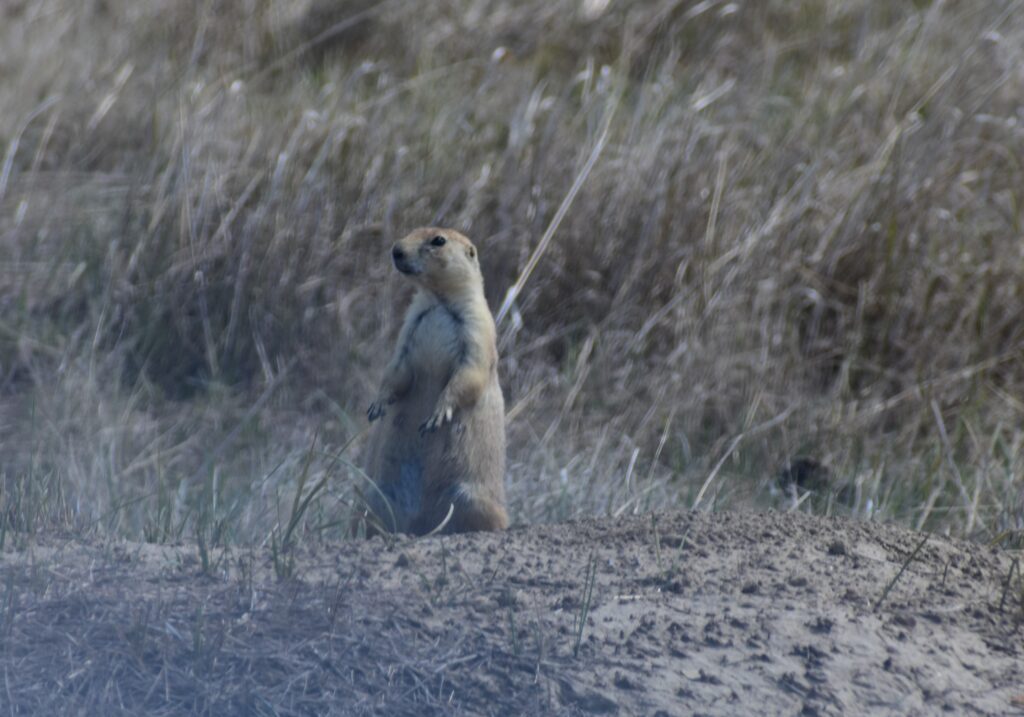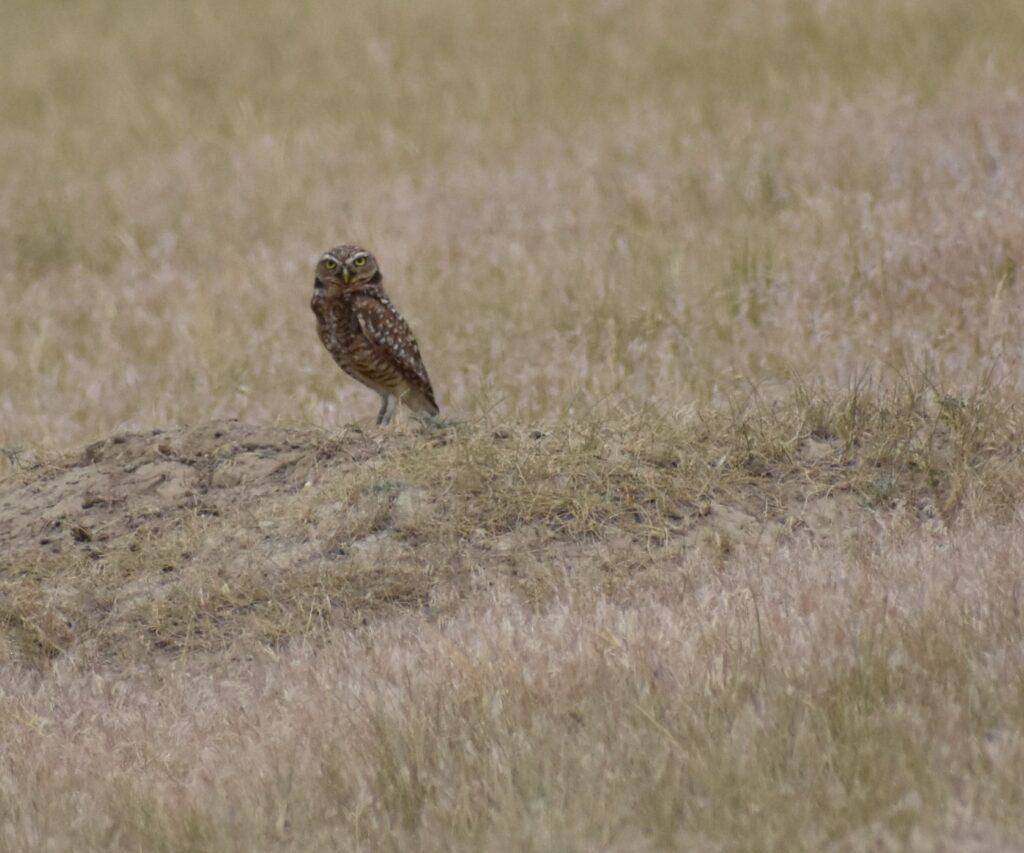News
Will Mr. Groundhog See His Shadow?

Today is Groundhog Day. And as cloudy skies are predicted, if he were in Wyoming, he may or may not see his shadow. According to tradition, if he sees his shadow, it means six more weeks of winter. Groundhog Day is a popular North American tradition observed on February 2 each year. It is a very old holiday, as noted in the following article.
And in Sheridan, on Feb. 2 of 1910, the Sheridan Daily Enterprise banner headline on the first page read; Six Weeks of Squalls and Stormy Weather—The Ground Hog Saw Its Shadow at Noon Today
The body of the article said, Bad Weather Forecast; Groundhog Sees Shadow – For six more weeks old King Boreas will reign supreme— six more of cold, icy, stormy weather, for the groundhog could not help seeing his shadow in the bright sunshine of today, and according to the legend back into his den he has gone and six more weeks of winter is sure to come.
The story of the ground hog or woodchuck, which is scientifically known under the ponderous and awe inspiring title of ‘Arctomys Monax,’ as told by the country folks to their children for many years while seated in the glow of the hearth fire, is that on noon of this date thousands of years ago, when the earth was young, one of the first members of the groundhog family, after sleeping away the long days and nights of winter in its burrow, awakened on February 2 and crept quietly from its hole to take an observation of the weather.
The animal found the sun shining brightly, and seeing its shadow upon the ground after having been asleep so long, it became greatly frightened, thinking it was a beast of prey rushed back into its den. The god of the clouds and storms, so the legend goes, observing the action of the groundhog, decreed that thereafter February 2 the animal should first emerge from its den, and should the day be sunshiny so that the groundhog could see its shadow, six weeks of icy, stormy weather should follow. On the contrary, should the day be cloudy, gloomy or stormy, so that the little animal could not see its shadow, it would mean that winter was practically over and there would be an early spring.
Today, therefore, is fraught with grave meaning to those whose welfare depends on wind and wave, sunshine and shadow, or change of time and tide. Today is also Candlemas day, and the Scottish poet has it that “On Candlemas day, if the sun appear, There’ll be two winters in one year.” Candlemas day in the United States has long since lost its significance, and in parlance Groundhog Day has taken its place. It’s Groundhog Day today from the frozen Yukon to the palms of Panama, and to thousands of people the appearance of that little animal is pretentious.
The most famous Groundhog Day ceremony is held each year near Punxsutawney, Penn., on Gobbler’s Knob, that is located in a rural area about two miles southeast of the town. The celebration is an old one that began formally in 1887.
An article in the Rock River Review from Rock River, Wyo., on February 6, 1920, describes the celebration:…...A community celebration of a somewhat different character but equally effective in its advertising power. It is the Ground-Hog Day picnic at Punxsutawney. Pa. At this novel annual event farmers, politicians and former residents to the number of many thousands gather to share in eating a splendid repast, the principal feature of which is ground-hog meat. The meat is cooked in barbecue and invariably wins the praise of the celebrants. Speeches and informal hearty greetings of old friends occupy the afternoon. While this event is not designed to advertise a farm product, its distinctive character and the fine spirit of hospitality that it obtains puts Punxsutawney and the surrounding country on the map.
Of course, today, groundhog meat, even barbecued, is no longer a part of the feast.
Feeling that Pennsylvania was too far away for an accurate forecast, in this article from the February 5, 1892 issue of the Newcastle News, the writer wonders if Wyoming should have its own weather animal. – February 2 was Ground Hog Day The day was fair. As we have no ground hogs in the country, we will have to try the experiment on a badger, and if he can see his shadow.

In 1984, Lander, Wyoming, businesswoman Mary Ann Atwood organized a Groundhog’s Day event at a nearby prairie dog colony, and one prairie dog was named, “Lander Lil.” When the Lander Post Office was built on the site, Lander Lil was immortalized with a three-foot-tall bronze statue by artist Bev Paddleford, a local sculptor. Beverly and her husband, Monte, own Eagle Bronze Foundry in Lander. The actual celebration has not been held for many years, but Lander Lil’s statue remains, and continues to predict the length of the winter on Groundhog Day.

Today, according to the internet, Florida has a burrowing owl predicting the weather, Texas as an armadillo, North Carolina has a squirrel and Connecticut has a duck.

In this rather lengthy piece from the Laramie Semi-Weekly Boomerang on February 6, 1906, it gives a good account of the Groundhog Day tradition. Groundhog Sees His Shadow; Six Weeks More of Winter For Laramie Yesterday, according to all traditions was Groundhog Day. And according to all traditions Laramie is to suffer six weeks more of cold weather for if the groundhog peeked out of his hole yesterday, he could not have escaped seeing his shadow. When he sees his shadow, according to tradition, he returns to his hole to continue his season of hibernation for six weeks longer. And during that six weeks winter weather will prevail.
A writer in the Housekeeper for February has dipped into the stories, concerning the ground hog and his ways, more particularly his day. With this result. Feb. 2, or Candlemas day, was a favorite holiday, marked by public gaiety and ceremonies in Europe during the Middle Ages it is still marked there by the closing of the banks and offices, but not otherwise outside of the church services.
In the church calendar it is known as the Feast of Purification of the Virgin, and was first instituted by Pope Sergius in the year 684 A.D. The popular name of the day is derived from the early custom of lighting the churches with candles and carrying these in procession on this festival.
The weather superstition is a world-wide fable. In Germany it is the badger that breaks his winter nap on this day; In France and Switzerland it is the marmot; In England, the hedgehog. Observation shows that none of these small animals do thus observe on the date fixed, also that the weather on this date does not accurately foretell that of the following two months. But it is generally supposed that in temperate latitudes. warm weather in the first half of February is apt to be followed by a cool spring.
February of 1903 must have been very cold and snowy in Wyoming, a least around Lusk. In the Converse County Herald on Feb. 5, If the hog was fool enough to venture out that day, we hope that he never found his burrow again, which will settle Groundhog Day as far as this section is concerned forever….
However, in 1911 on February 3, the Cowley Weekly Progress reported a sunny day in what was undoubtedly a mild winter. Yesterday was the proverbial Groundhog Day and of course the little beast saw its shadow, which, according to an old saw, indicates another six weeks of winter. Well, if it’s to be of the same brand we have thus far had, let ‘er went and welcome.
In Greybull, 1923 was windy and cold, as we see in this clipping from the Greybull Tribune on February 2.

Groundhog Day has found its way into the movies as well. In the 1993 Bill Murray comedy movie Groundhog Day, Murray portrays Phil Connors, a cynical television weatherman who is not happy about covering Groundhog Day’s festivities and is condemned to relive Groundhog Day over and over until he gets his life on track and finds his true love.
Of course, most Wyomingites are of the same mind as this writer in the Newcastle Newsletter, February 2, 1922, Today is Groundhog Day. If he sees his shadow today, we are in for six more weeks of winter and if he don’t see it, we will probably get the six weeks of winter anyway.
So, Happy Groundhog Day, and let’s hope none of us has to relive the day over and over.

